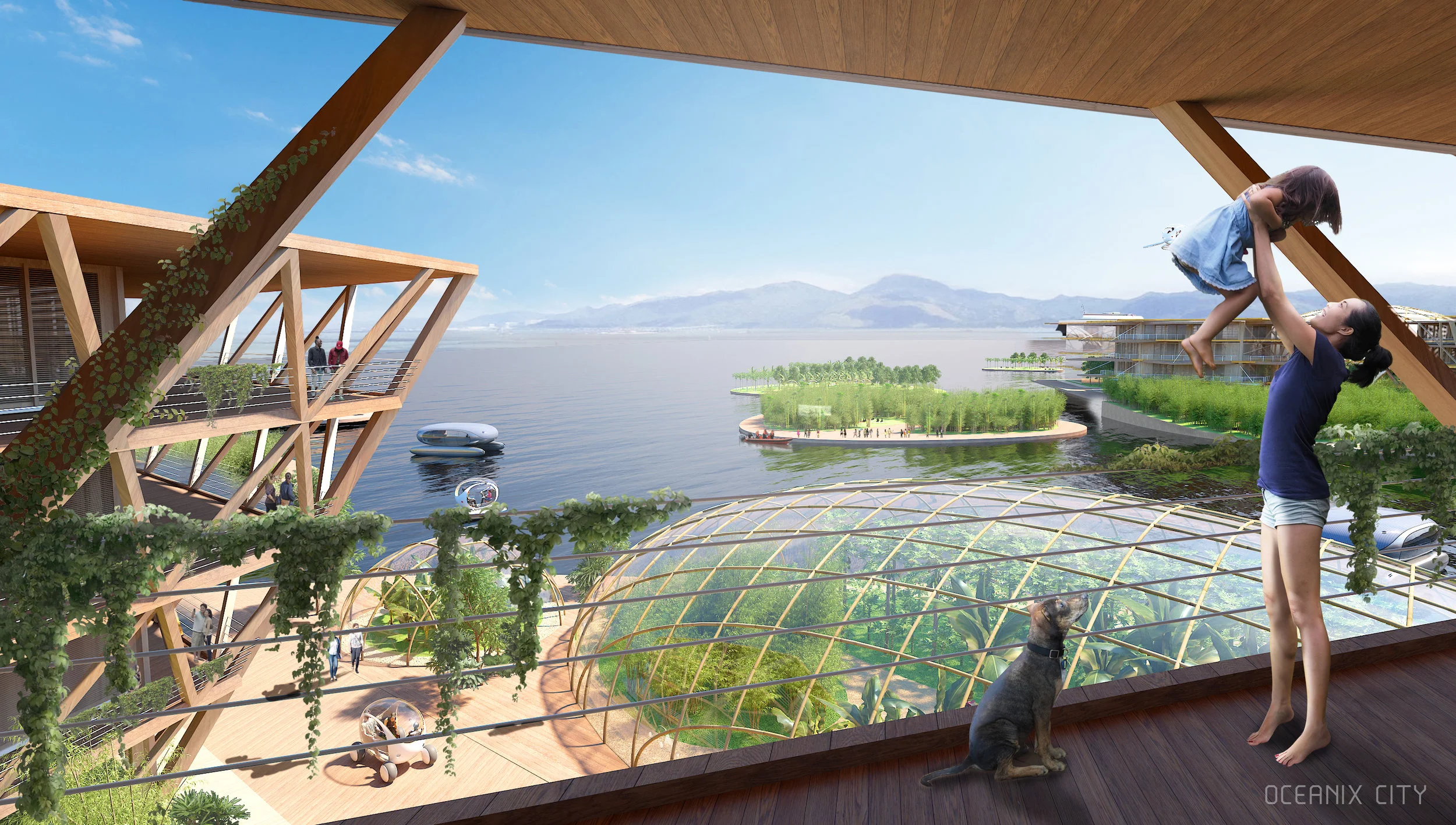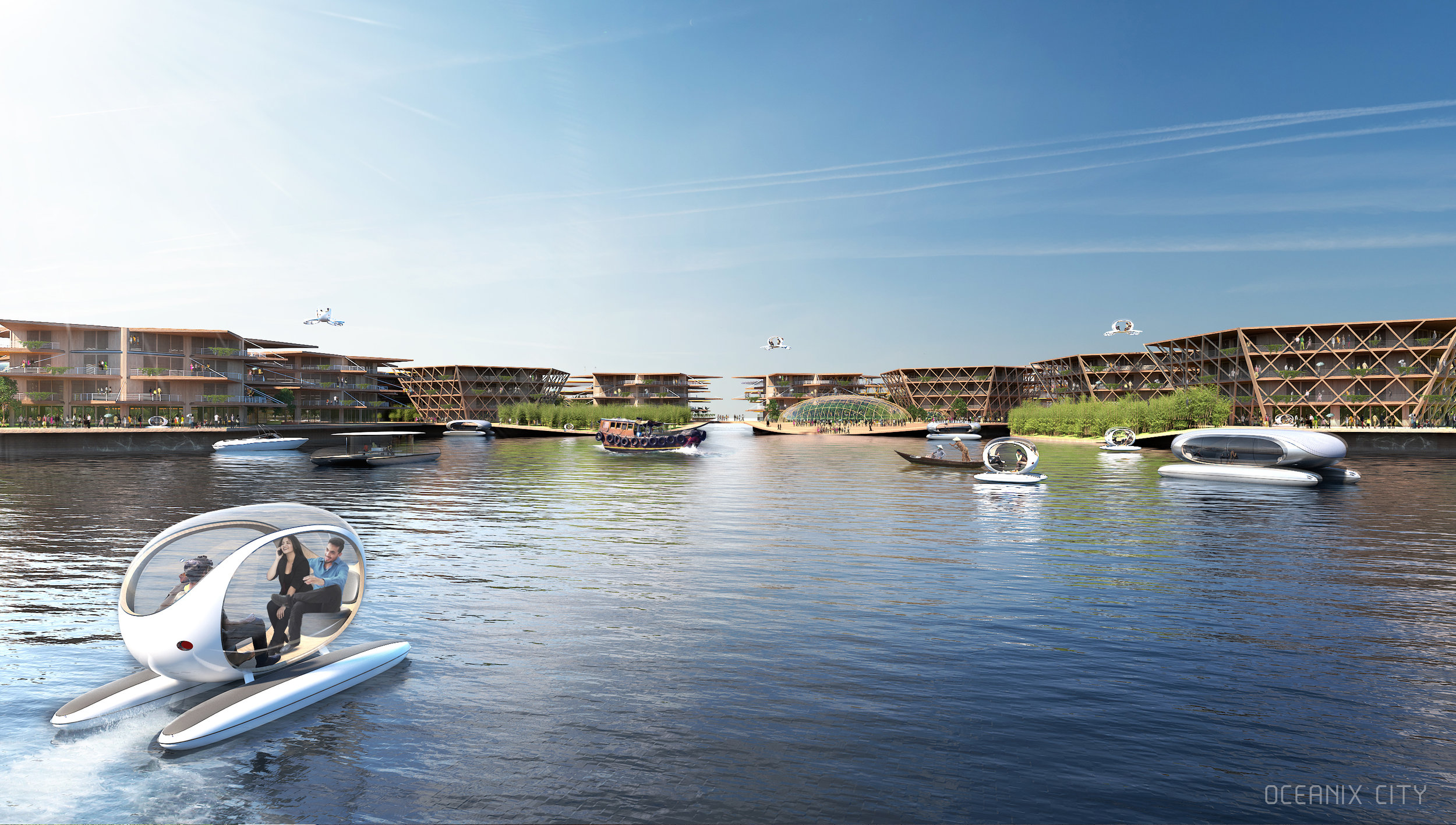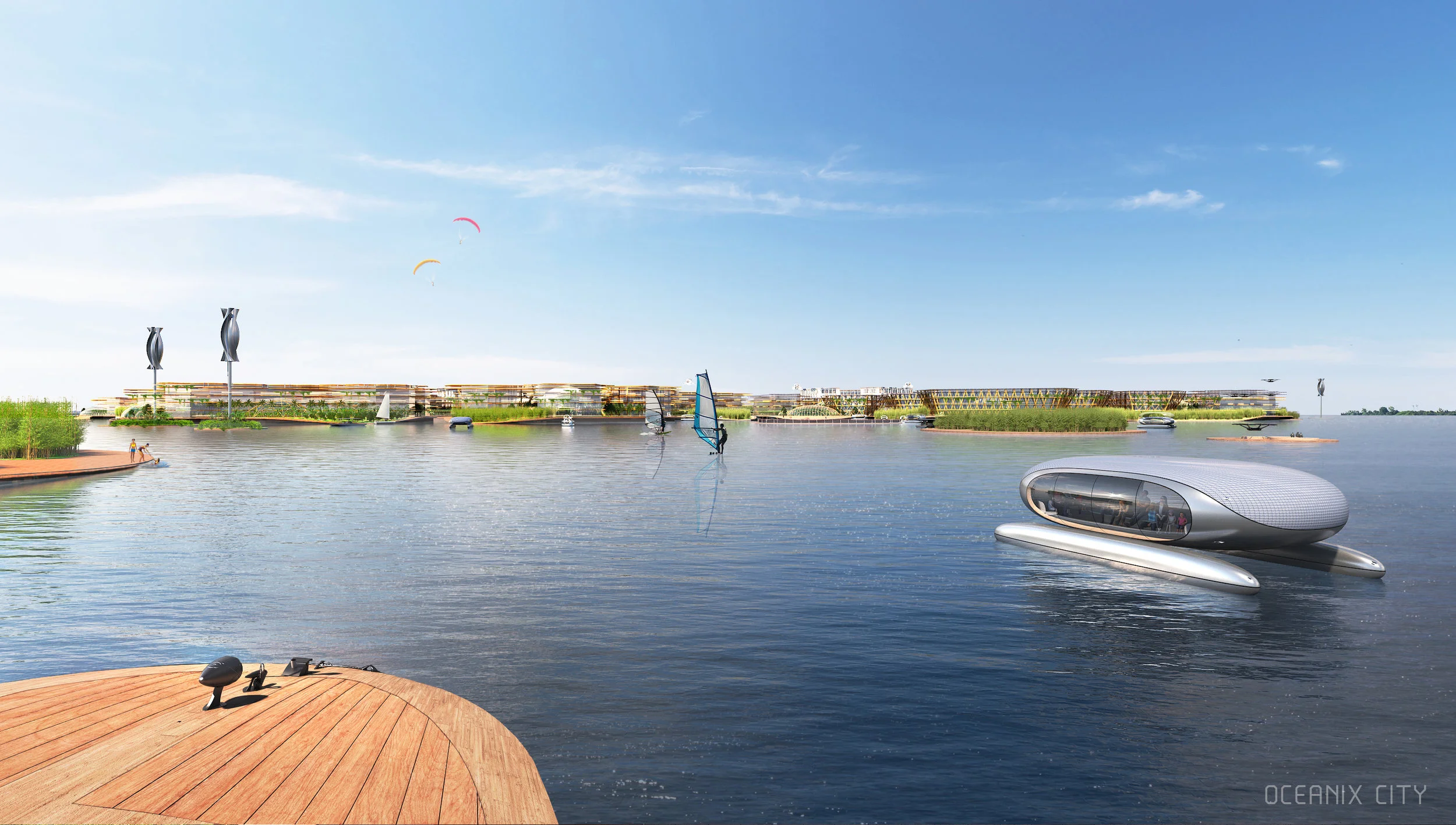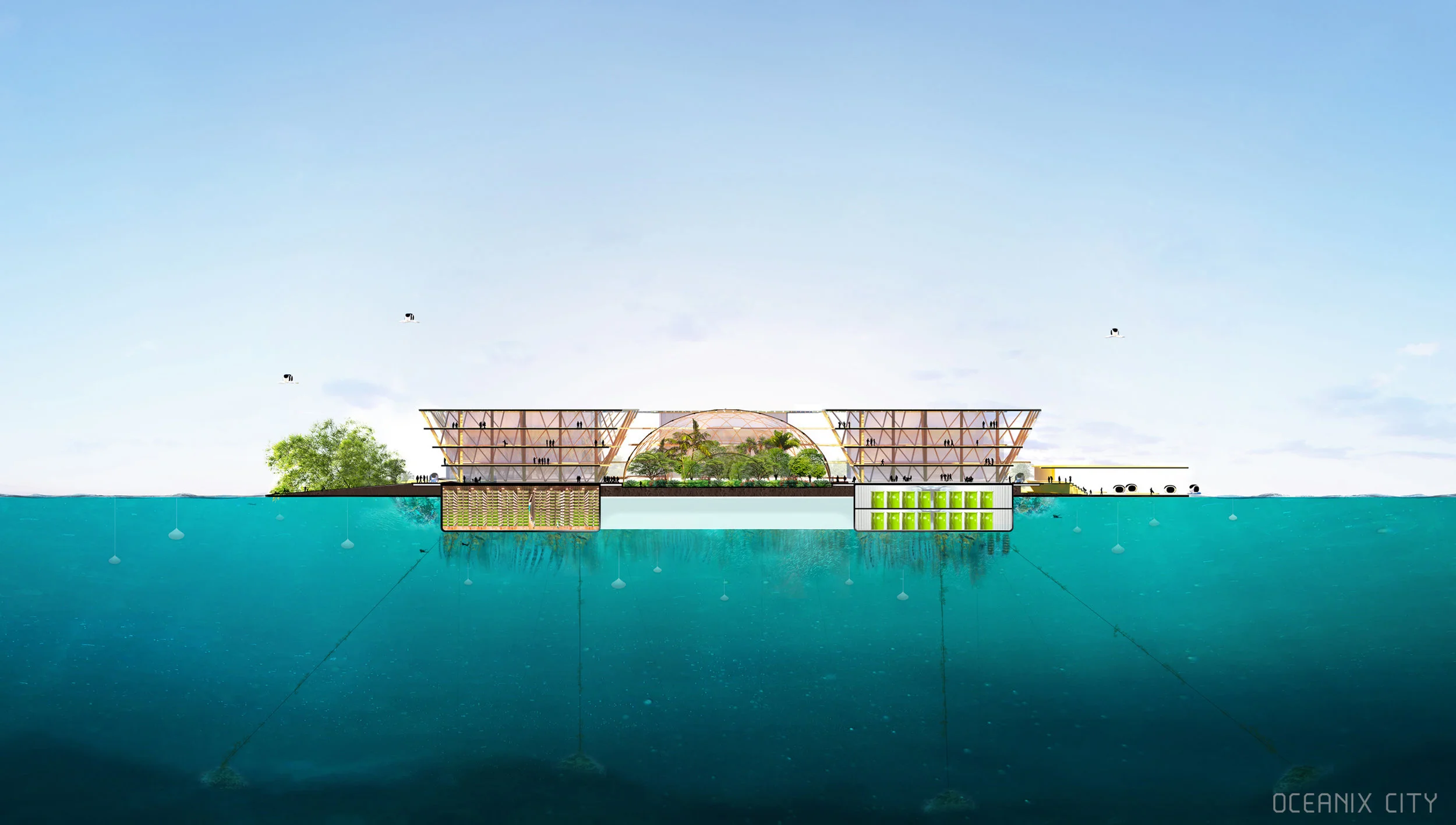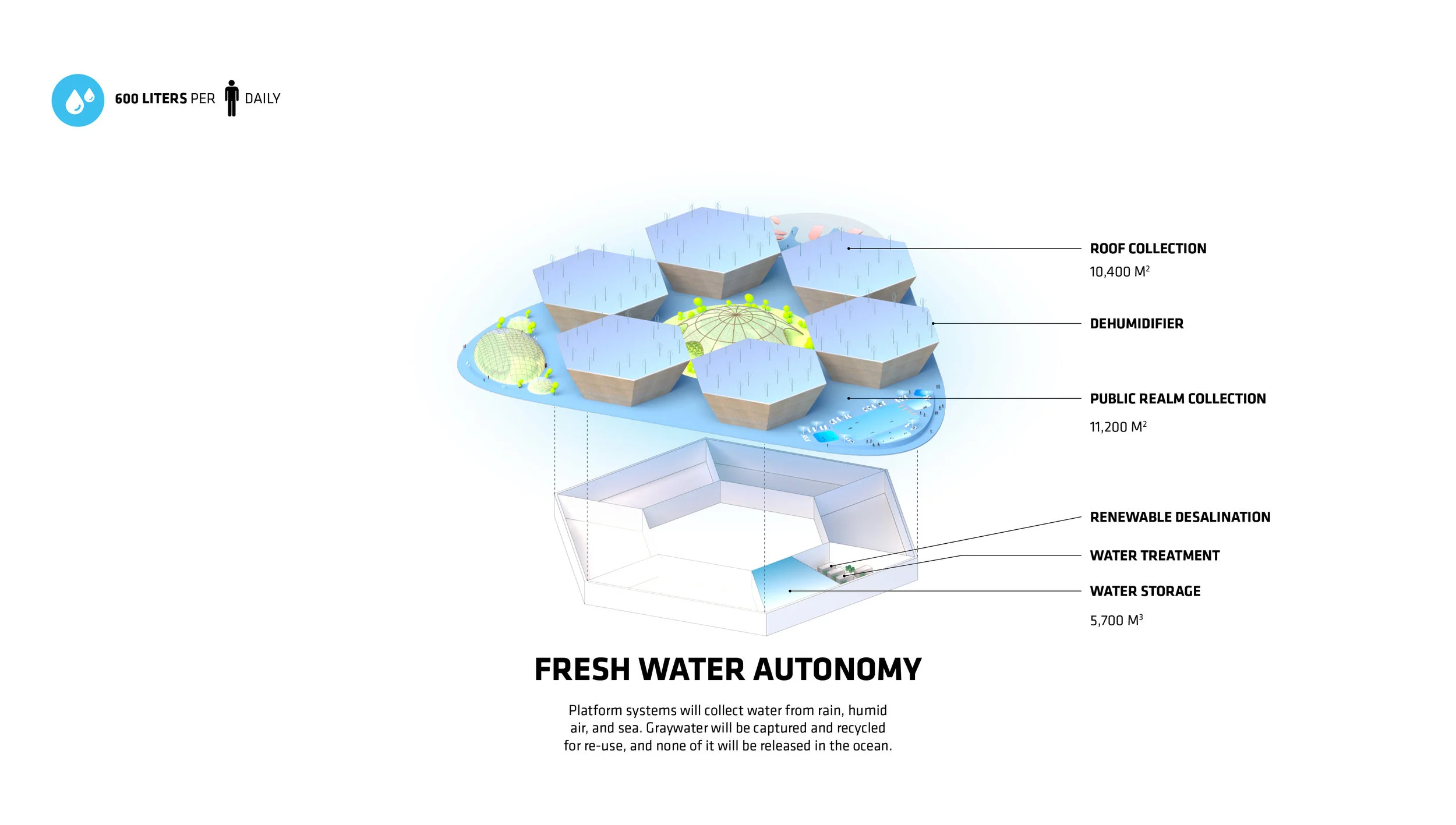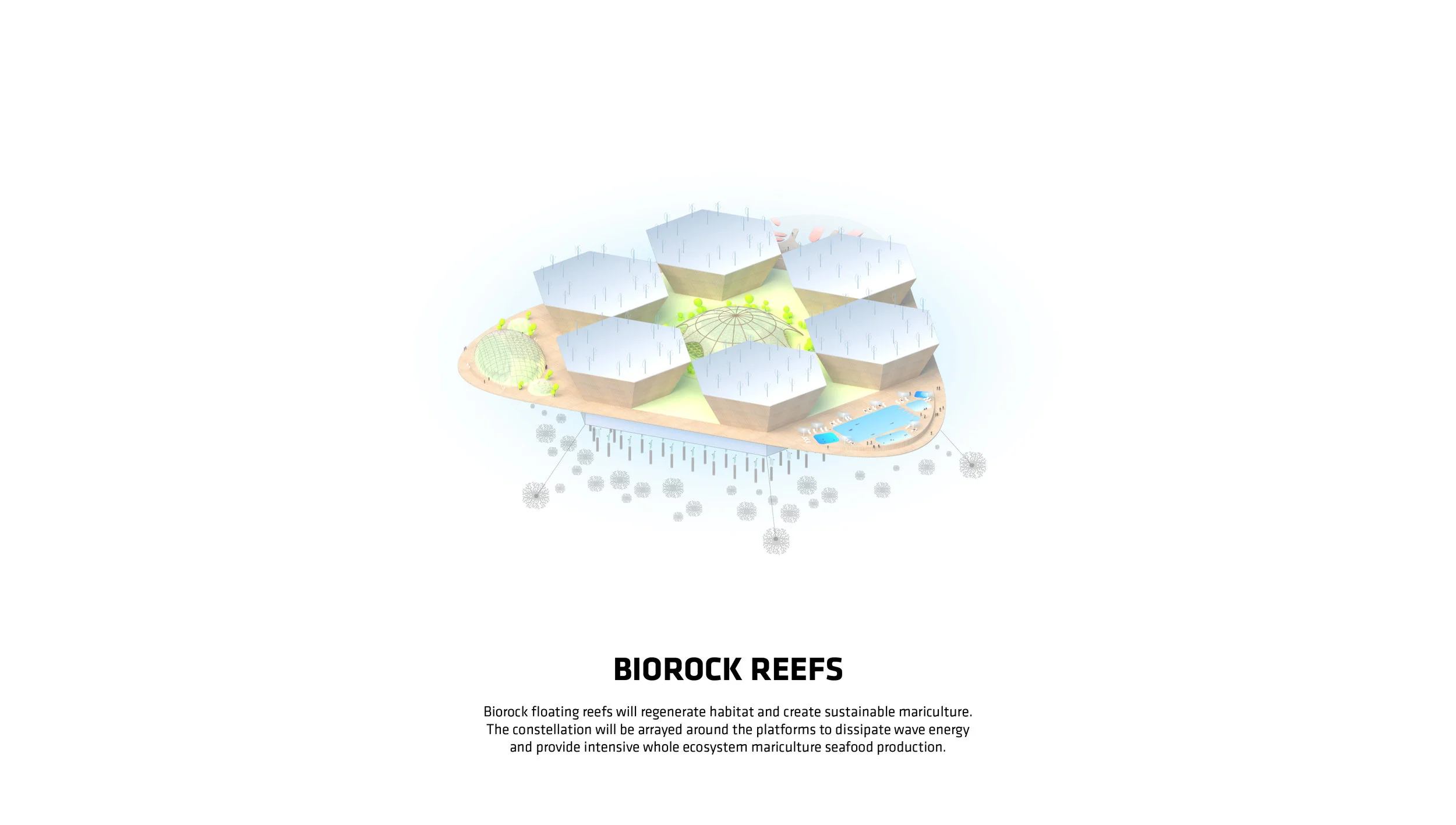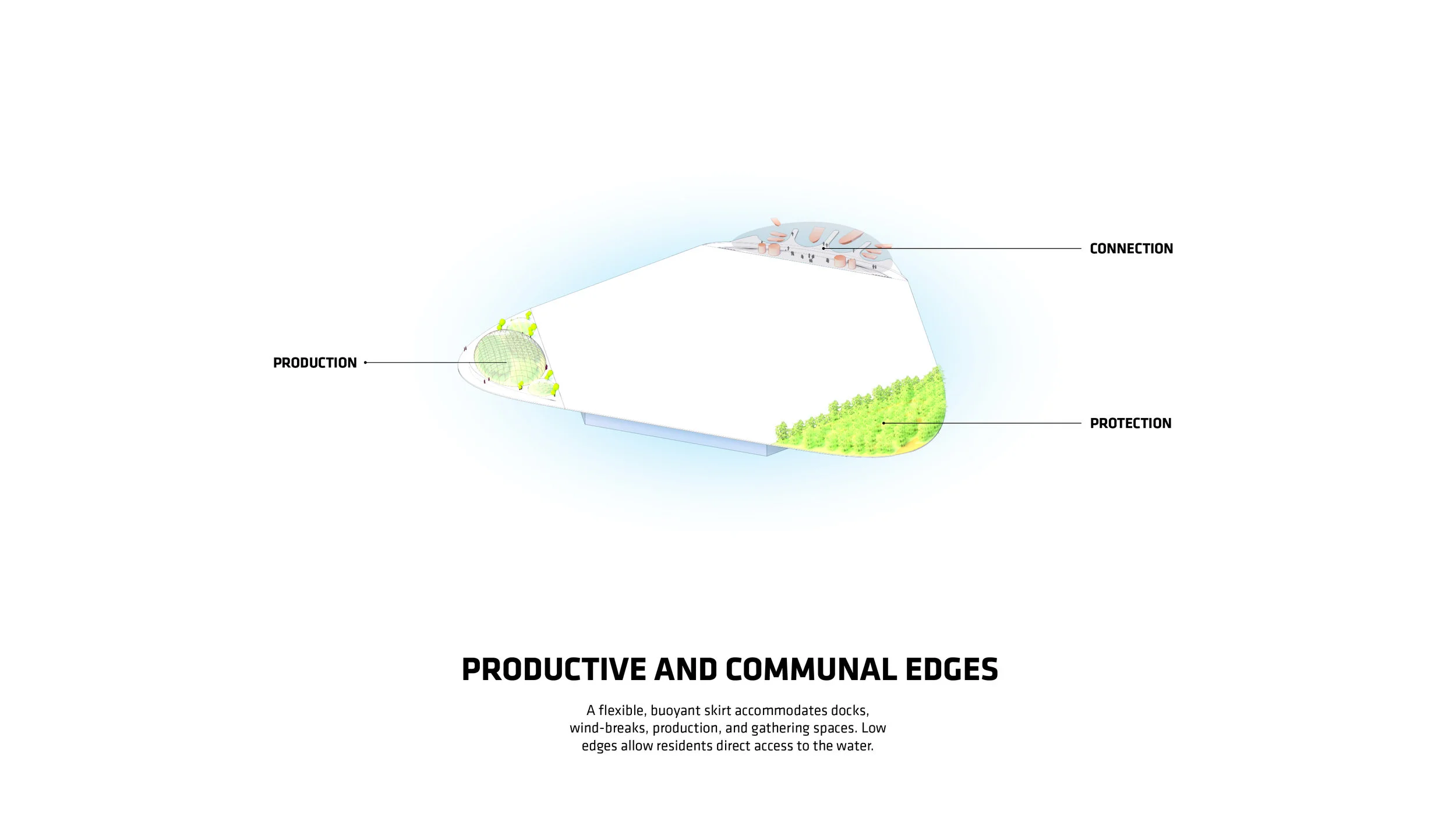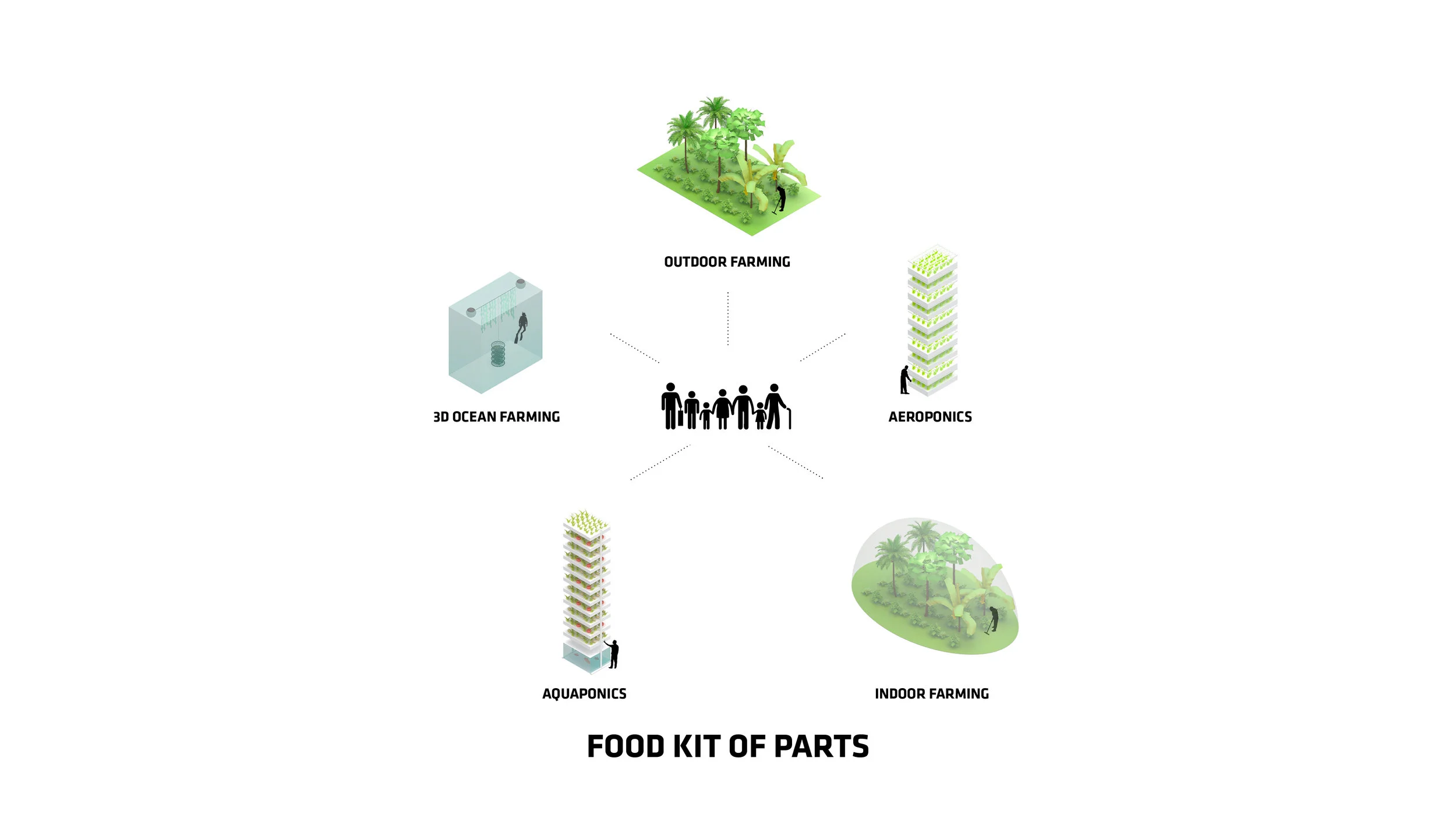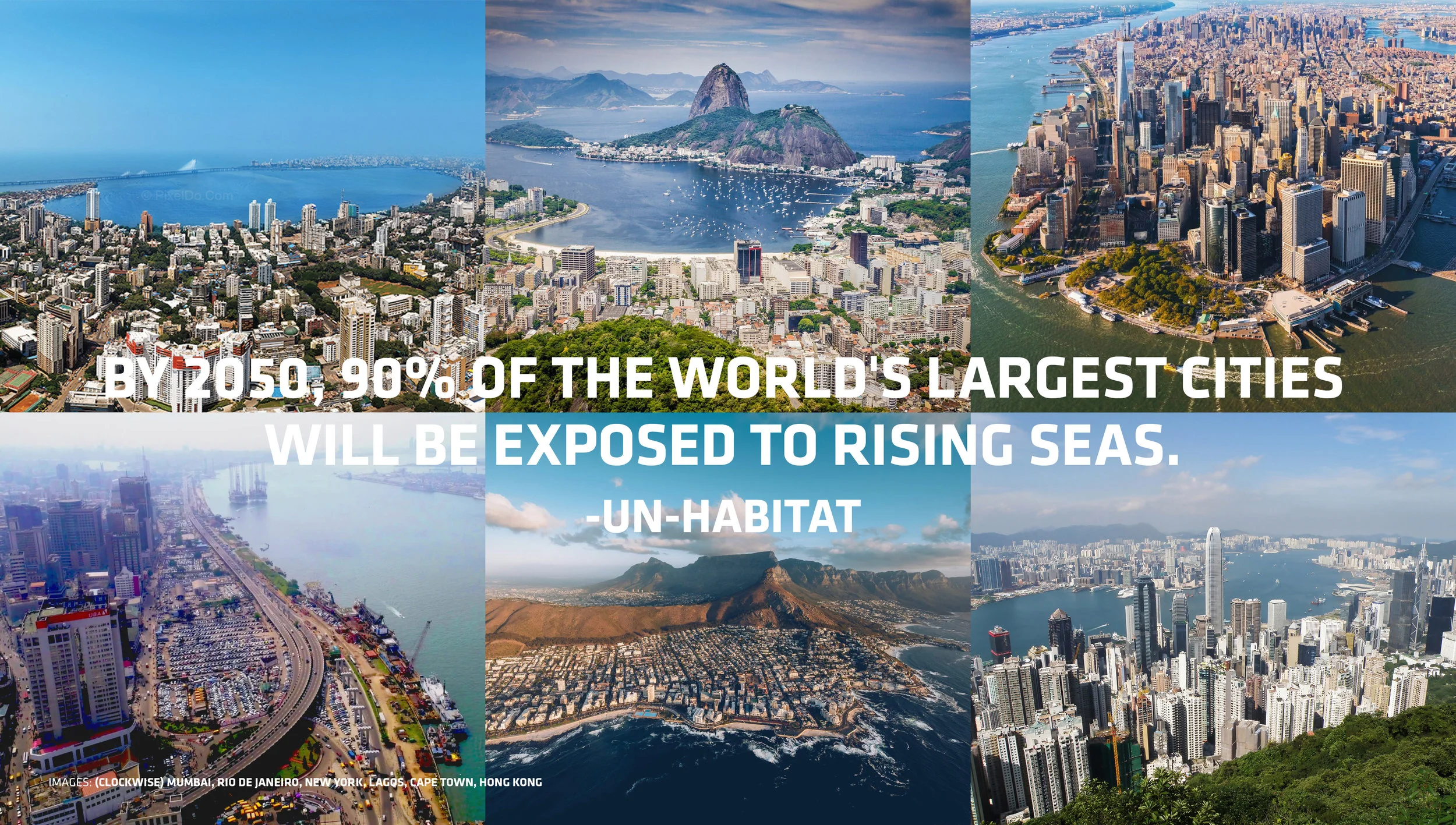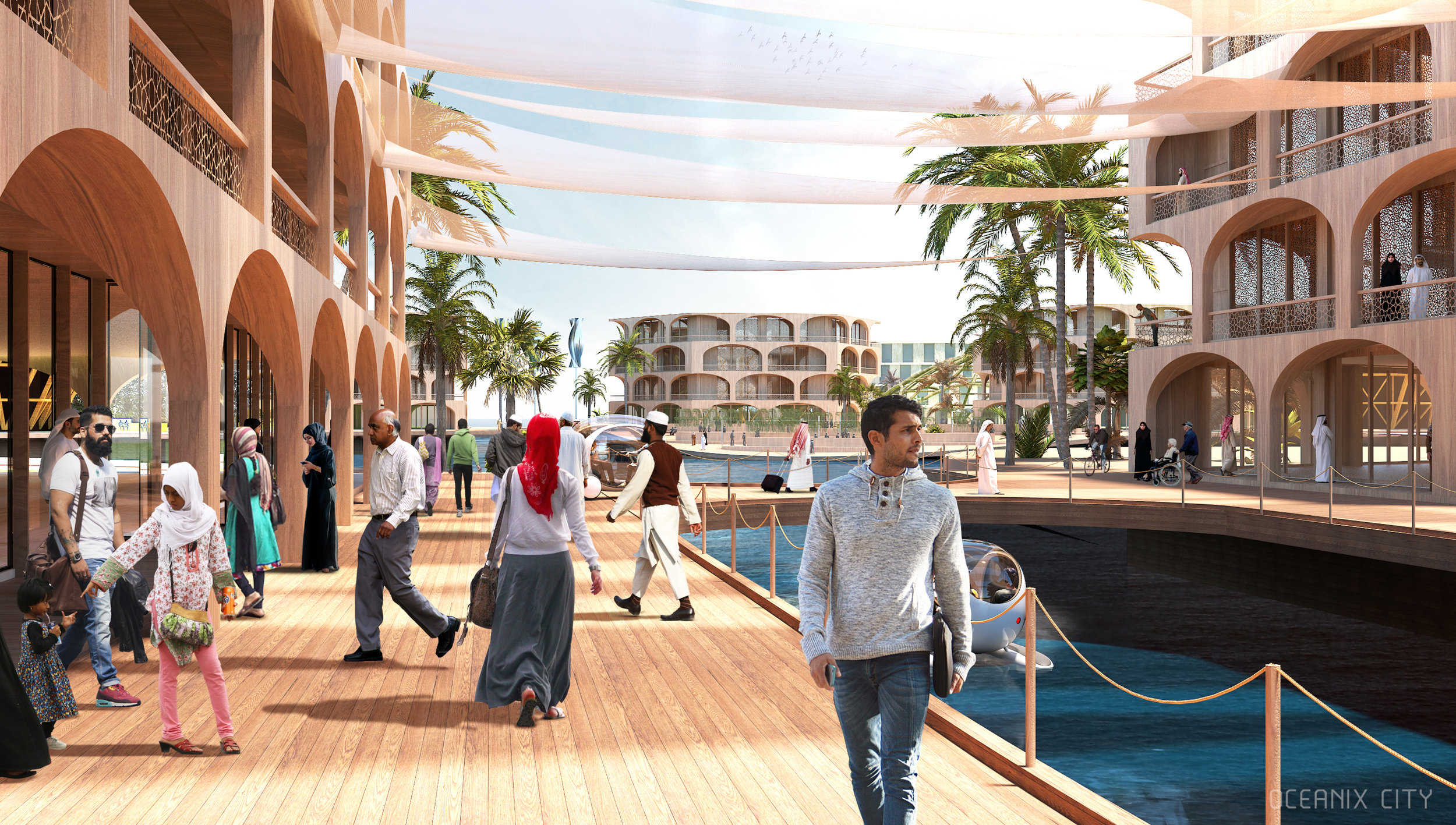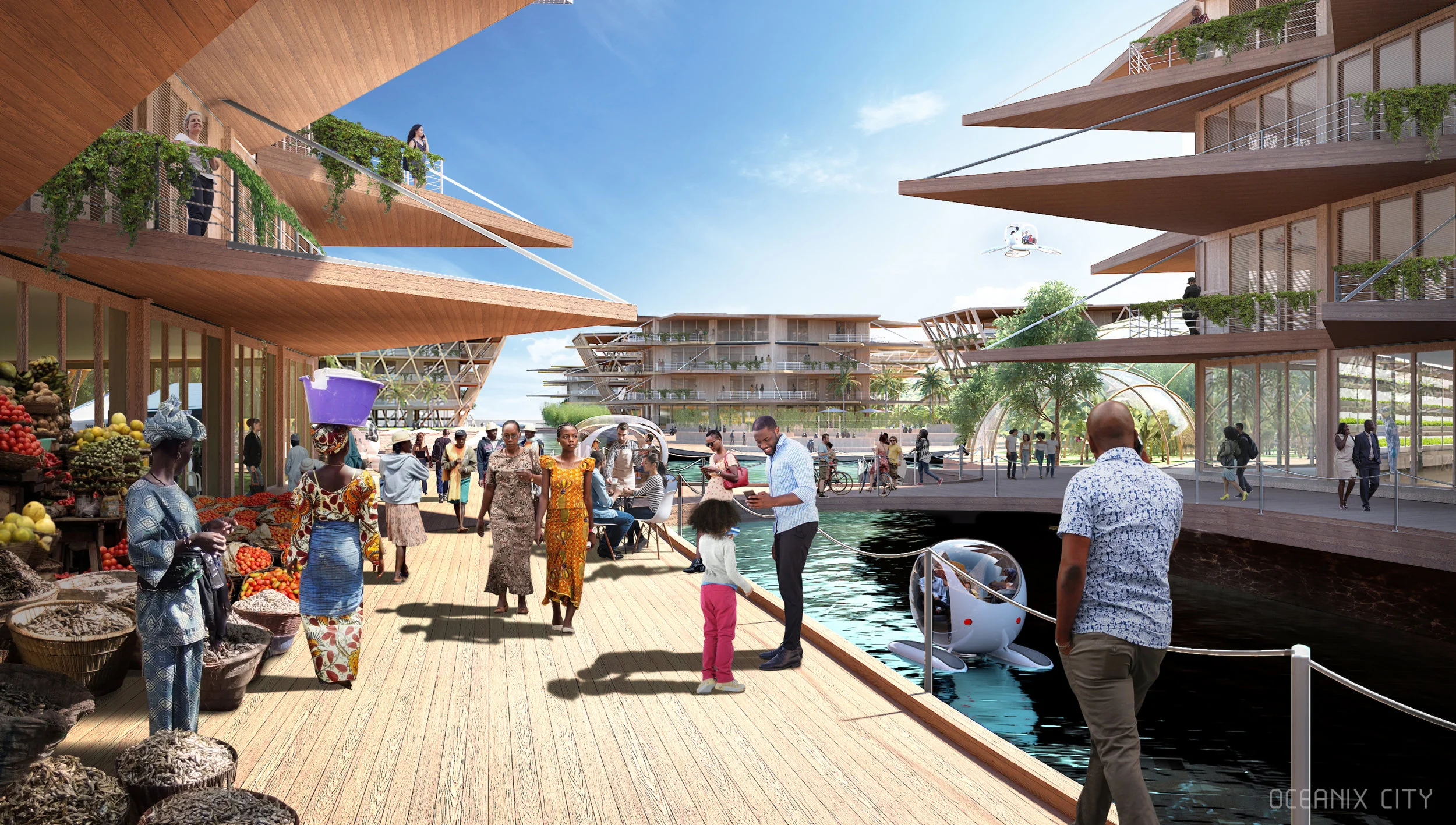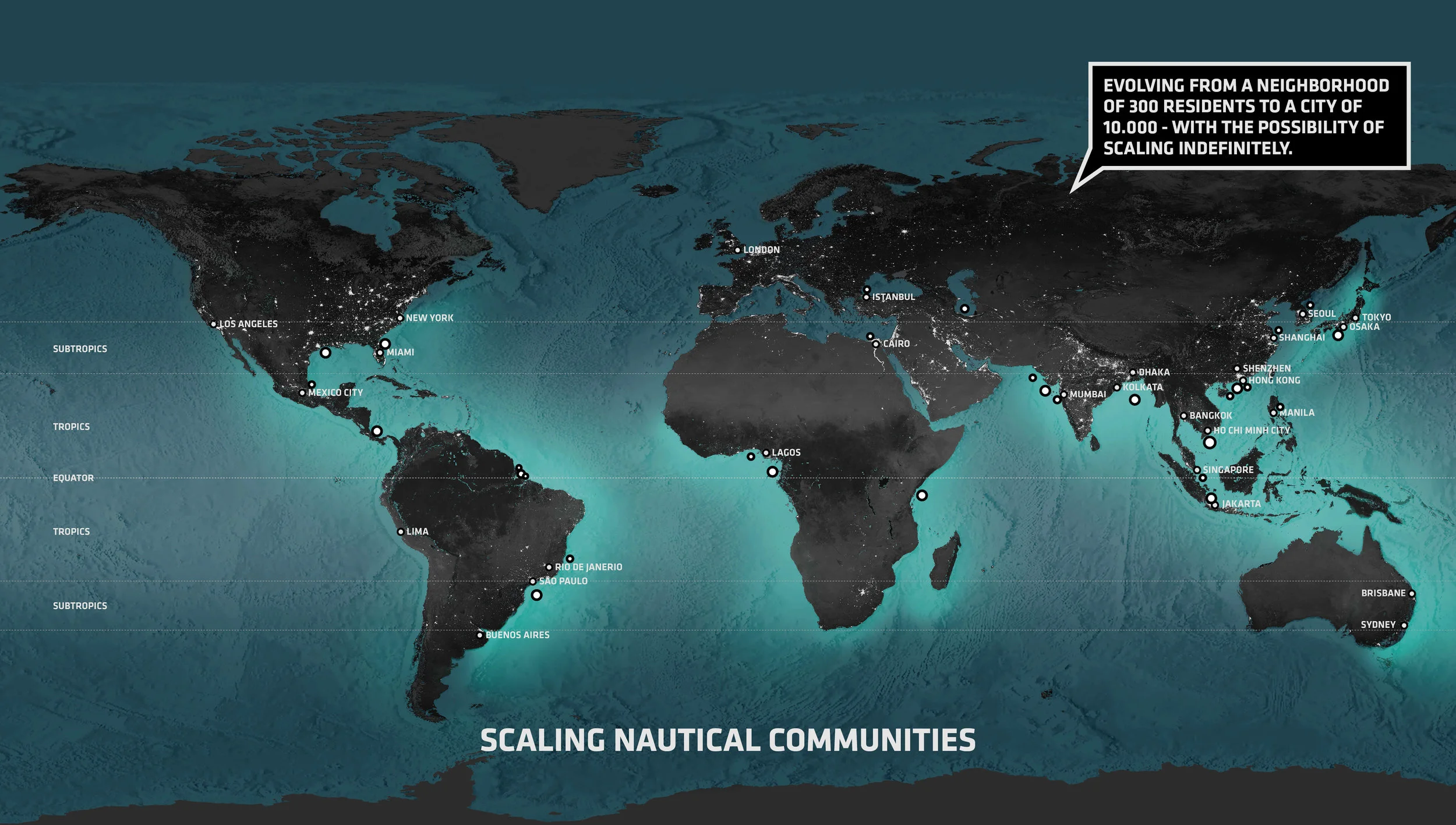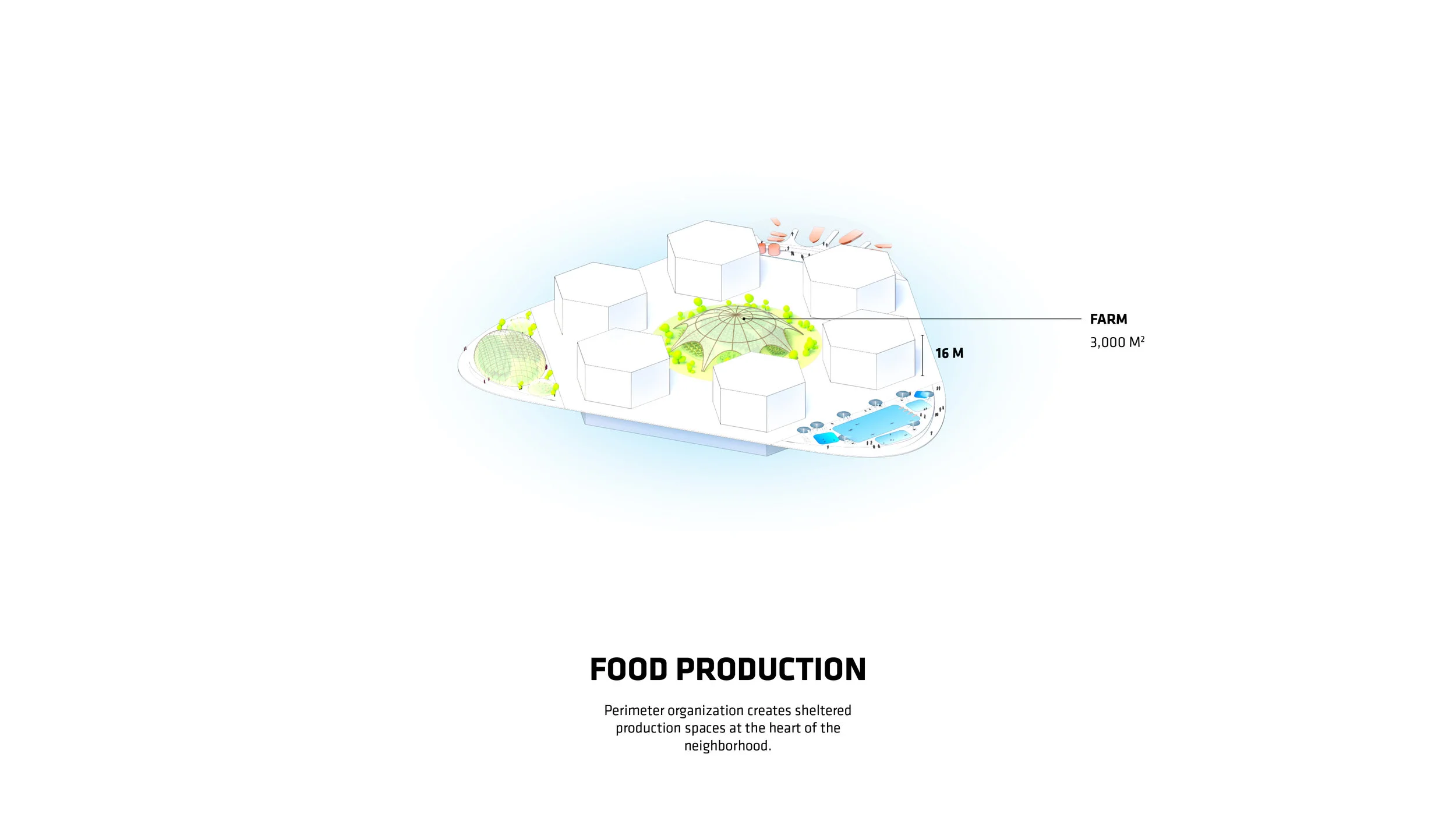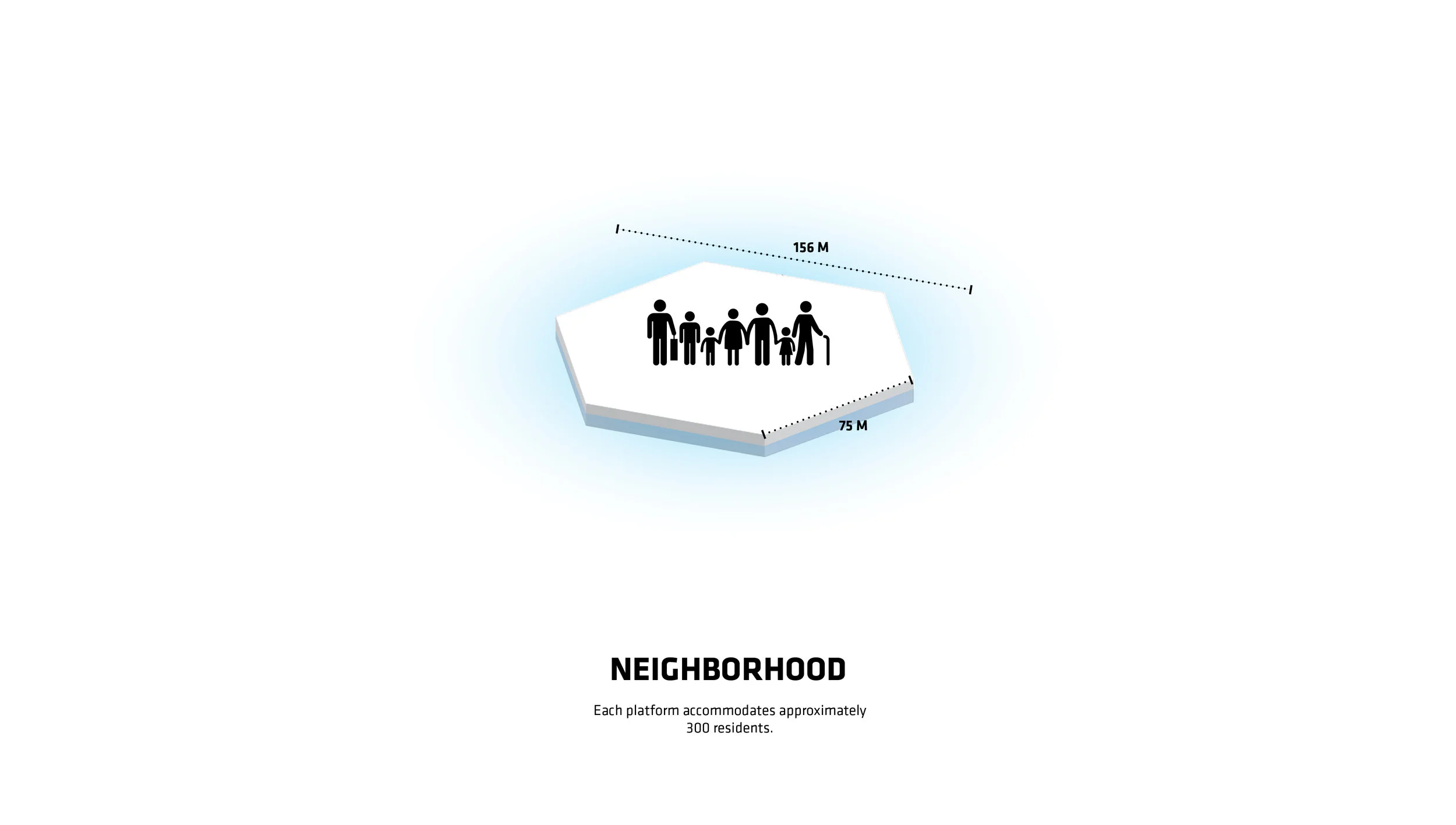
Welcome to iGrow News, Your Source for the World of Indoor Vertical Farming
Oceanix City: This Concept Of Floating City Includes Food Production And Farming
Linked by Michael Levenston
“Every island has 3,000 square metres of outdoor agriculture that will also be designed so that it can be enjoyed as free space,” said Ingels.
By Katharine Schwab
Fast Company
Apr 4, 2019
Excerpt:
For Oceanix’s idea to work, all the food needed to feed every person living in the floating city would need to be grown there. What does that mean? There’s certainly no meat involved, mostly because beans are a far more efficient way of getting protein. Some crops would be grown outdoors–an estimated 32,000 square feet on each hexagon would be devoted to food cultivation. Much of that would be outdoors, since the sun uses the least amount of stored energy, and the crops would double as green space for residents.
But according to Clare Miflin, the cofounder of the Center for Zero Waste Design, a floating city would also need to experiment with other ways of growing food. One possibility: outdoor vertical farming for crops like lettuce. Then there’s hydroponics and aeroponics, the latter of which uses 10 times less water than traditional farming simply by spraying plant roots with mist. Aquaponics, in which plants grow hydroponically and are fertilized with fish waste, has a deep precedent–the Aztecs used aquaponic farming on their own floating agricultural islands many centuries ago.
With food comes food waste. Miflin wants to create a circular system where all food waste is turned into nutrients for the soil through composting. Food waste would go through a pneumatic system of pipes directly to an anaerobic digester to start the composting process. But there’s also the problem of packaging. Miflin believes that it would be crucial for the floating city to only use reusable food containers, with centrally located drop-off points for people to put their empty containers; from there, they could be cleaned centrally and reused.
Read the complete article here.
On November 2018 MG Magazine Published An Article Written By Chief Strategist of D Branding - Dino H Carter
As someone with extensive experience, Dino knows how important brand thinking is for an industry that grows so rapidly like the Cannabis industry.
Here are some of the highlights:
The foundation of every company is its brand. No matter how booming the industry or what a company produces, if its brand is not solid the business will find surviving—much less thriving—in a competitive environment difficult. Make no mistake: The cannabis industry is becoming more competitive by the day.
So, what is a brand? Is it the company’s logo? A product’s name?
It’s neither.
Brands are intangible. Logos, product names, packaging, marketing, advertising, and customer service are some of the tangible assets that help build a brand. The brand itself is much more: a “feeling” customers associate with a service or product; a concept, an idea…an experience.
For your business to become a brand, it must develop a personality beyond its products and services, and that personality must align with consumers’ wants and needs. Who are your customers? What benefits do you deliver to them? How do your products and services make them feel about themselves? As you consider your brand, focus outward; see your brand from consumers’ point of view. Remember: They have all the power. They probably can buy products very similar to yours whenever they want, wherever they want, and for a price with which they feel comfortable. What—besides the nebulous and ubiquitous “high quality”—makes your brand so special they should buy from you? Even the smallest companies can build a strong brand with devoted customers simply by creating an identity that resonates with their target market.
Your brand isn’t about your company—it’s about who your customers want to be. Nike’s brand, for example, has less to do with shoes than with excellence in sports. Check out the company’s ads sometime. You won’t find the benefits of the product in big, bold type. In fact, you may not even notice the product at all. Instead, you’ll see action shots of professional athletes doing what they do best. Nike’s customers don’t buy shoes—they buy a dream.
(to read the whole article click here)
Business Owner:
If you don't get good results from your marketing activities
If you don't get the business results you desire
If sales are down
If you are launching a new product in 2019
You should work on your brand strategy. Book a free consultation call with Dino H Carter, Chief Strategist of D Branding.
Click here to book your free session now.
Vertical Farming Robot Wins Design Challenge
The winners of the 2018 Valtra Design Challenge were announced at the EIMA Show in Bologna, Italy. The competition which started in April and ended on September 23rd was targeted globally to designers, academic design students, design studios and automotive suppliers. This year’s challenge was to design the multi-purpose vehicle of the future: a machine that can handle multiple tasks to meet future needs and that is more efficient than today’s highly specialized machines.
The first place of the competition was awarded to the work “VERTICAL” by Austrian design team Benjamin Miller, Jack Morris, and Alireza Saeedi. The jury praised the concept as being a very creative interpretation of the challenge theme. “At first glance it looks very specialized, but if you judge the complete system instead of only the tractor, a versatile and holistic concept for the future emerges. The concept takes care of everything from seeding to distribution of food”, comments member of the jury Hans Philip Zachau.
“Valtra has been widely recognized for ground-breaking and visionary industrial design. We started the Design Challenge in order to raise awareness of future challenges in the agricultural community and society at large. It is also a platform for designers to showcase their innovations.” comments head of the jury and industrial design & user experience manager at Valtra, Kimmo Wihinen. “The Valtra Design Challenge is the world´s largest design contest in agricultural machinery and one of the biggest in the off-road vehicle industry. The high number of innovative and high-class entries shows us that there is a demand for this type of competition, and we are already working on the theme for the next edition”, he adds.
The Valtra Design Challenge 2018 Jury members were Kimmo Wihinen from Valtra, Brandon Montgomery and Sam Freesmeyer from AGCO, Hans Philip Zachau from Lighthouse Industrial Design and Paolo Grazioli Frozen Design Tokyo.
The Valtra Design Challenge was organised for the second time in 2018. This year the competition has received 107 entries from 32 different countries and six continents. The first prize of the Valtra Design Challenge is a €10,000 cheque.
For more information:
www.valtra.com/designchallenge
World Water Day 2018:
March 22nd is World Water Day (WWD), a day to celebrate one of the world’s most precious resources and to raise awareness around global water issues. Every year, WWD coincides with the release of the World Water Development Report by the U.N. Educational, Scientific, and Cultural Organization (UNESCO).
World Water Day 2018:
Working With Nature to Improve Global Water Management
March 22nd is World Water Day (WWD), a day to celebrate one of the world’s most precious resources and to raise awareness around global water issues. Every year, WWD coincides with the release of the World Water Development Report by the U.N. Educational, Scientific, and Cultural Organization (UNESCO). This report provides a specific theme to guide world leaders and policymakers for the next year as they pursue meaningful solutions for water issues on a global level.
This year’s theme, “Nature for Water,” focuses on innovative solutions for water management that are based on natural systems. UNESCO seeks to integrate man-made approaches to water infrastructure—gray engineering like drains, pipes, and sewers—with green water management systems that mimic nature, harnessing the power of natural systems rather than suppressing them. The report addresses water usage across all sectors—disaster prevention, sustainable city planning, and water quality improvement—but the sector that uses the greatest amount of water is agriculture. Only 0.001 percent of the water on earth is freshwater suitable for human use, and of this limited supply, approximately 70 percent of freshwater is used for agriculture.
The report highlights practical, nature-based management practices for agriculture that can accomplish the dual objective of robust food production and smart resource conservation. The report focuses on three main principles: minimal disturbance of the soil, permanent soil cover, and biodiversity. By planting crops with minimal plowing, farmers can build up the natural environment of bacteria, fungi, and microorganisms in their soil, improving soil health and reducing erosion. Continuous plant growth and the use of mulch to keep soil covered improves water retention and also reduces erosion. Biodiversity in farming has many benefits, but when used for water management, it can be beneficial for establishing crops that are resilient to pests and disease, reducing the need for chemical inputs.
Agriculture depends on clean, sustainable sources of water, but many common, modern-day farming practices harm the water supply. Excessive plowing, for example, can degrade the soil and cause erosion. Up to 40 billion tons of topsoil are washed into waterways due to erosion every year. Improper use of chemical fertilizers, pesticides, and herbicides can lead to water runoff that introduces these chemicals into streams, rivers, and eventually the water supply. Establishing a long-term plan for sustainable agriculture requires farm management practices that accomplish the goal of efficient food production while ensuring the future health of the soil, water, and ecosystem.
In addition to improving water management, the practices identified in the report have benefits more broadly for agriculture, building soil health while also improving the overall efficiency of farm systems. According to the U.N. Food and Agriculture Organization (FAO), to feed the growing world population, farming systems will need to make significant improvements in resource management, including the use of water: “The global transition to sustainable food and agriculture will require major improvements in the efficiency of resource use, in environmental protection and in systems resilience.”
Beyond agriculture, there are many other nature-based solutions for water management identified in this year’s WWD report. For example, the creation of natural buffers in cities between sources of water runoff and natural waterways can improve the water quality of rivers and streams. In general, the restoration of forests, grasslands, wetlands, floodplains, and other natural ecosystems would greatly increase the amount of freshwater that is available around the world.
While there are significant obstacles to global water management and conservation, it is increasingly clear that the answer is in nature. Global policies that harness the power of natural systems instead of fighting them can greatly improve water management and conservation.
This year, in honor of World Water Day, we encourage you to learn more about protecting this precious resource and challenge you to take a stand and advocate for nature-based solutions for water management in your community.






